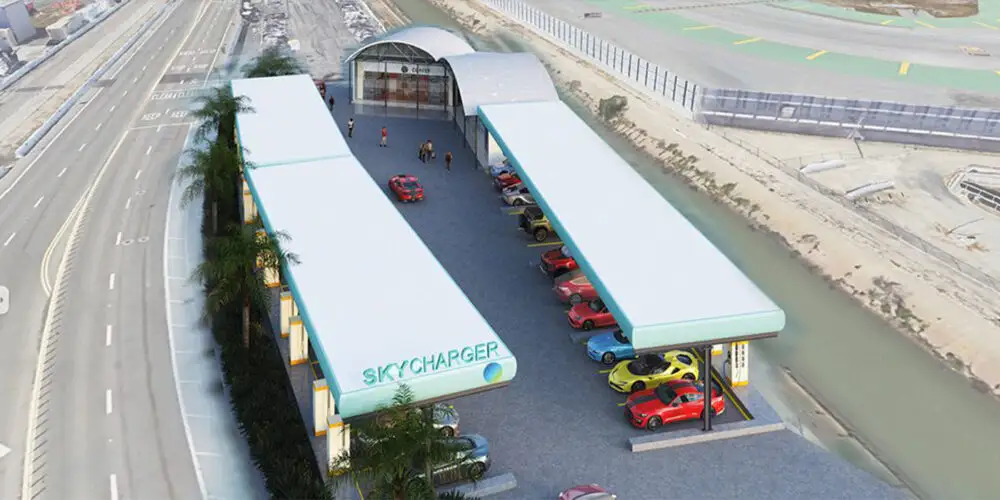In 2023, the electric vehicle (EV) revolution is charging ahead at full speed. According to Bloomberg Green, the global EV market is expected to reach 36% of total car sales by 2030, a significant leap from the 10% observed in 2021. A critical factor driving this rapid adoption is the expansion and enhancement of fast-charging stations, which are making EV ownership more convenient than ever. In this article, we’ll explore how fast-charging infrastructure is transforming EV adoption, delve into the latest technological advances, and offer practical tips for new and prospective EV owners.
The Rise of Fast-Charging Stations
How Fast-Charging Stations Work
Fast-charging stations, often referred to as DC fast chargers, are designed to provide a significant charge in a short amount of time, making them ideal for long-distance travel or quick top-ups. Unlike Level 1 or Level 2 chargers that can take several hours, fast chargers can power up an EV from 20% to 80% in as little as 30 minutes. This rapid charging capability is pivotal for reducing range anxiety, a common concern among potential EV buyers.
Technological Advancements in 2023
Recent technological advancements have greatly enhanced the efficiency and accessibility of fast-charging stations:
- Higher Power Outputs: Modern fast chargers can deliver up to 350 kW, significantly reducing charging times. Brands like Tesla and Hyundai are at the forefront, with the Tesla Supercharger V3 and Hyundai’s high-speed charging network leading the way.
- Universal Compatibility: Newer stations are increasingly compatible with a wider range of EV models, including those from Lucid Motors, Rivian, and Volkswagen.
- Smart Charging Solutions: Innovations such as dynamic power sharing and AI-driven load management optimize energy distribution, reducing wait times and enhancing grid sustainability.
Expansion of Charging Networks
The expansion of charging networks has been crucial in making fast charging more accessible:
- Global Initiatives: Governments and private companies worldwide are investing heavily in charging infrastructure. The International Energy Agency (IEA) reports that Europe alone plans to install over 1 million public chargers by 2025.
- Strategic Locations: Charging networks are strategically expanding along major highways and urban centers, ensuring that EV drivers are never far from a charging point. This initiative is supported by major players like ChargePoint and Electrify America.
Practical Tips for EV Owners
How to Charge Your EV Efficiently
To maximize the benefits of fast-charging stations, consider the following tips:
- Plan Your Route: Use apps like PlugShare or A Better Routeplanner to locate fast-charging stations along your travel route.
- Optimize Charging Time: Charge your EV when it’s between 20% and 80% capacity to maintain battery health and reduce wait times.
- Check Compatibility: Ensure that the charging station is compatible with your vehicle’s charging port and power capacity.
Where to Find Fast-Charging Stations
Fast-charging stations are becoming increasingly ubiquitous. Here are some key locations to find them:
- Highway Corridors: Ideal for long-distance travel, with chargers placed approximately every 50 miles.
- Urban Centers: Convenient for city dwellers, often located in shopping malls, parking garages, and public spaces.
- Retail Partnerships: Companies like Tesla have partnered with retailers such as Target and Walmart to provide on-site charging.
What to Compare When Choosing a Charging Station
When selecting a fast-charging station, consider the following factors:
- Charging Speed: Compare the kW output to match your vehicle’s charging capability.
- Network Coverage: Evaluate the network’s footprint to ensure coverage in areas you frequently travel.
- Cost of Charging: Check pricing models, which can vary between time-based and energy-based rates.
Future Trends in Fast-Charging Technology
Fast-charging technology is continuously evolving. Here are some future trends to watch:
- Wireless Charging: Companies like Rivian are exploring wireless charging pads that offer seamless charging without cables, potentially revolutionizing the convenience of EV ownership.
- Ultra-Fast Chargers: The development of chargers exceeding 500 kW aims to reduce charging times to mere minutes, comparable to refueling a gasoline vehicle.
- Renewable Energy Integration: As PV Magazine highlights, integrating solar and wind energy into charging stations can make them more sustainable and reduce reliance on fossil fuels.
Conclusion
Fast-charging stations are a game-changer in the world of electric vehicles, significantly contributing to the acceleration of EV adoption in 2023. With advancements in technology, strategic expansion of networks, and increasing accessibility, the transition to electric mobility is not just a future possibility but a present reality. For consumers, the shift towards fast-charging infrastructure offers greater convenience, reduced range anxiety, and a more sustainable way to travel.
As we look ahead, the continuous evolution of charging technology and infrastructure promises to make EV ownership even more appealing and practical. Are you ready to join the electric revolution? Share your thoughts in the comments and let us know how fast-charging stations have impacted your driving experience.

